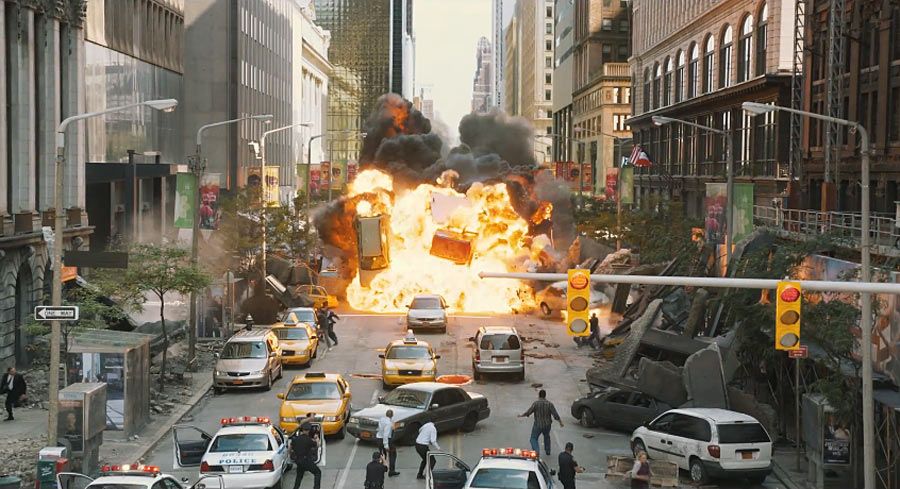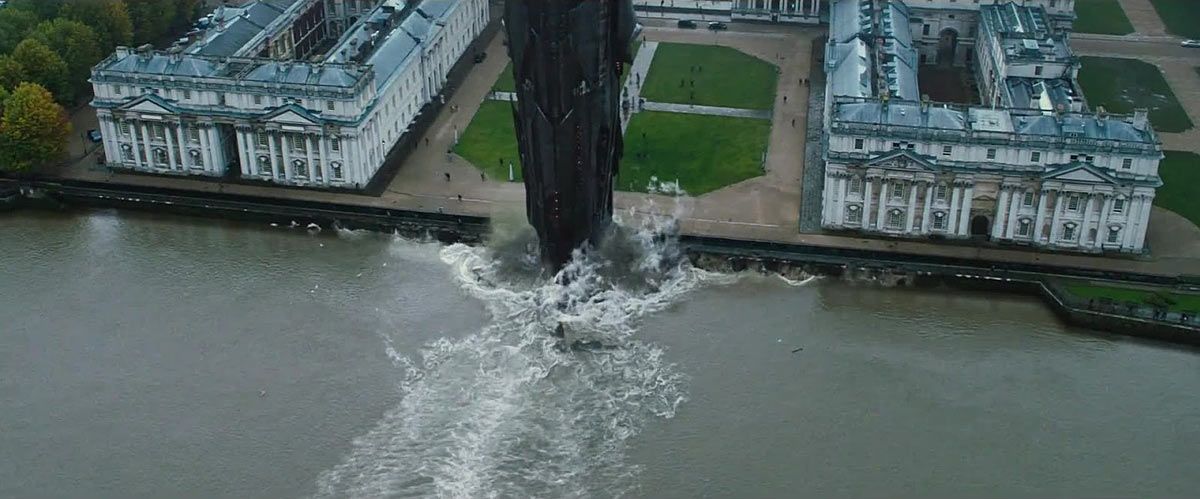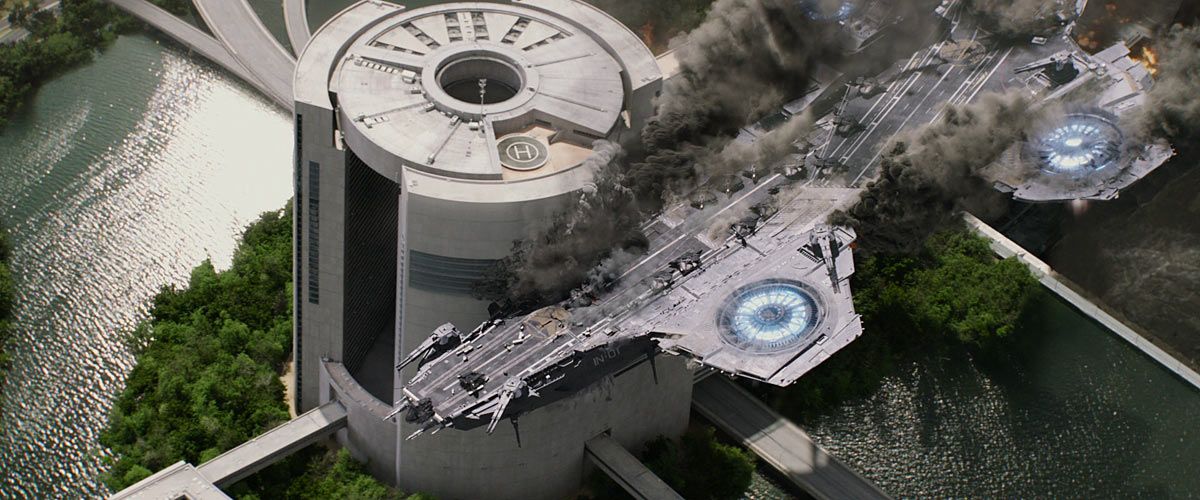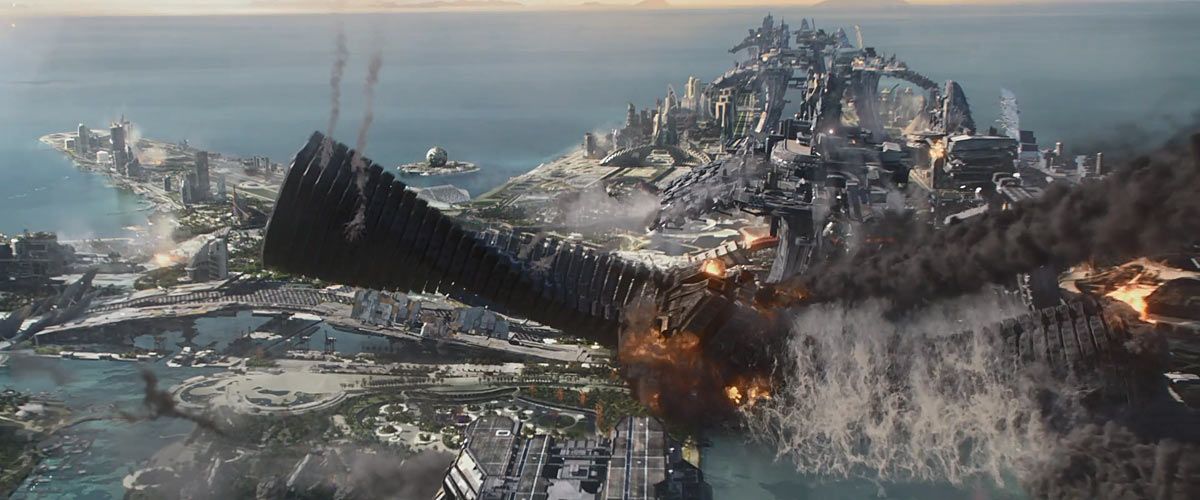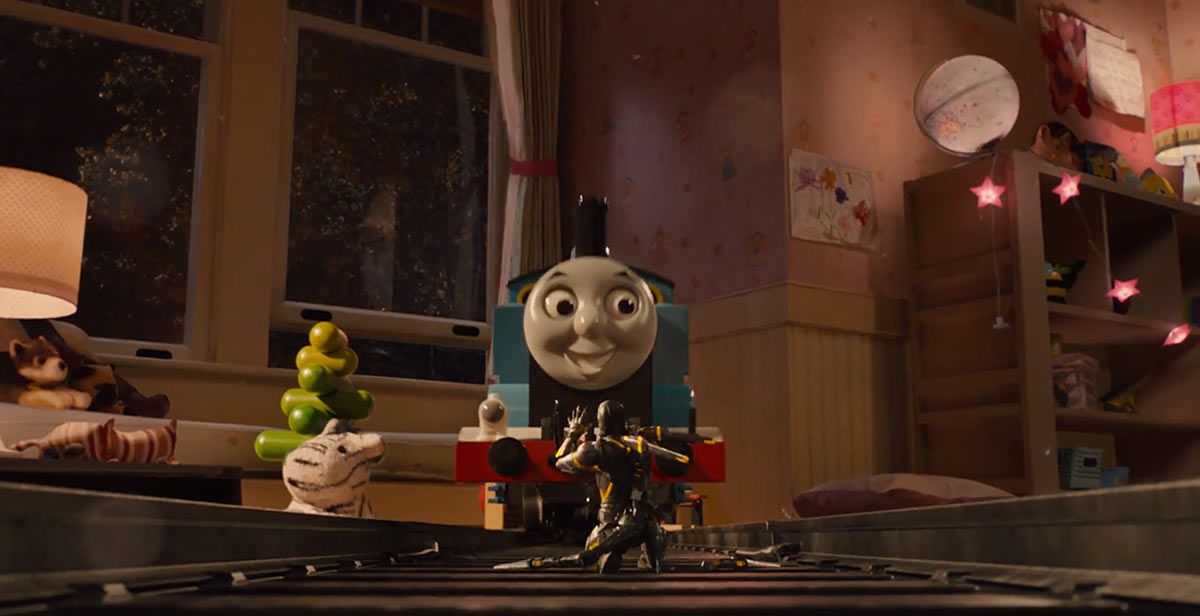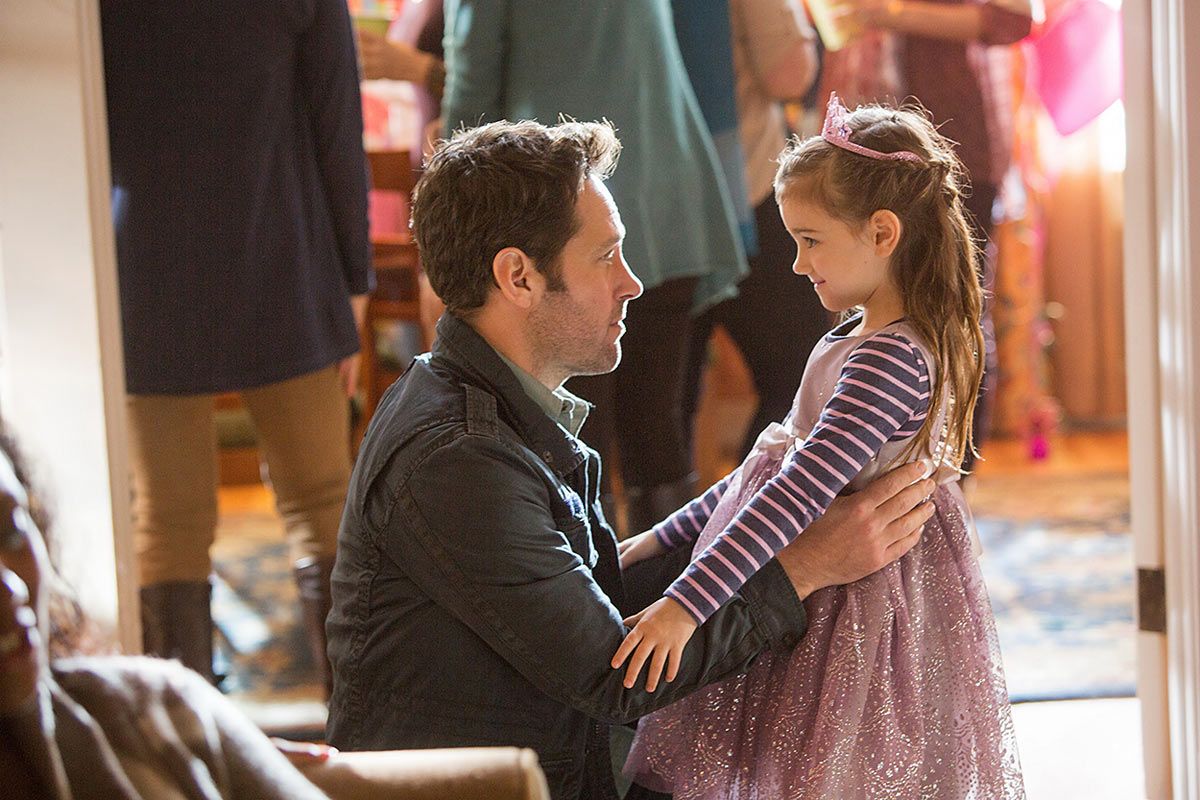I'm directly responsible for about $60 of "Ant-Man's" opening weekend haul, because I corralled my entire family into seeing it on Saturday night. You're welcome, Paul Rudd! Because I spent the last week with my family in Tennessee, I actually broke my tradition of seeing the Marvel Cinematic Universe films on the Thursday night before opening day at midnight (or earlier, as is now often the case). This seemed appropriate considering that "Ant-Man" is unlike a lot of recent Marvel films -- and that's a good thing.
Okay, no, I'm not talking about Hope van Dyne. Surprise! Also, if you think that I would think Hope's treatment in this film is a good thing, then flip back through the IYFJ archives. CBR's Meagan Damore pretty much dropped the mic where Hope van Dyne is concerned. I agree with all of her points, which is a shame because Evangeline Lilly is just generally phenomenal. It upsets me that she keeps seeking out action roles and keeps getting sidelined like this; remember, she accepted the role of Tauriel in the "Hobbit" franchise under the condition that it wouldn't involve a love triangle, and then those tricksy filmmakers snuck one in during reshoots!
Anyway, no, the best thing to come out of "Ant-Man" and something that I hope the thirty-three million dozen superhero movies coming out in the next five years learn is that you don't have to go big in the third act in order to reach a satisfying conclusion. Over the past few years, superhero movies -- and, well, all action movies -- have decided that true victory for the good guys looks like survivors crawling out of wreckage. The property damage in these films has spiked over the past few years, and "Ant-Man" is a refreshing change of pace. And yeah, spoiler warning for everyone that hasn't seen "Ant-Man" yet.
REVIEW: Marvel's "Ant-Man" Works Best When Staying Small
Let's just look at the Marvel movies' third acts: big aliens crashing into buildings ("Marvel's the Avengers"), big ship crashing into buildings ("Thor: The Dark World"), big ships crashing into a big building ("Captain America: The Winter Soldier"), big ship crashing into city ("Guardians of the Galaxy") and big city being turned into a big ship and then exploding ("Avengers: Age of Ultron"). Expand the scope out a little bit and you'll find the complete destruction of Metropolis in "Man of Steel," a ravaged and war torn Gotham in "The Dark Knight Rises" and a big ol' crashed Enterprise in "Star Trek Into Darkness." And you know, I haven't seen any of the "Transformers" films after the first one, but I'm gonna go out on a limb and say that some of those movies feature big things crashing into other big things.
That's where we're at with action movies in general and superhero movies in particular. Big things crash into other big things, people scream, heroes either focus on saving them ("Age of Ultron") or they're just too busy ("Man of Steel"). Looking at the list of Marvel jams specifically, the studio's Phase Two was dominated by explodey ship-on-building action. Only "Iron Man 3" escaped that trope by moving the battle away from civilians. Sure, a lot of Iron Man suits exploded, but the property damage was mostly limited to the stuff kept in Stark's garage. So after a phase filled with shots of buildings or landscapes being clobbered by aliens and ships and/or blown up, "Ant-Man" feels like a breath of fresh air.
"Ant-Man's" third act features no big ships and the only incidence of massive property damage is ironically tidy and void of collateral damage. Right before the big third act showdown, all of Pym Technologies' headquarters is reduced in size, causing the building to appear as if it blinked out of existence; in reality it's probably to scale with my Minimates, which confirms that if I got control of Pym Particles, I'd use them to create action figure playsets. A whole building was destroyed, even if no armored space snake or dark elf vehicles were around. But the way the destruction was executed was almost comically opposed to the wide scale destruction of other hero movies; there's nothing left of Pym Tech to clean up. The empty building -- a fact that "Ant-Man" made sure to show us -- just popped out of sight. No rubble, no debris, no screaming, no falling cars.
The most property damage in the entire movie happens to the household of Scott Lang's ex-wife Maggie. In fact, the property damage caused by Ant-Man's showdown with Yellowjacket is so minimal that Maggie's new cop boyfriend Paxton easily calls it out; "There's a hole in the ceiling," he says to Lang. Yeah, there is! And to any of us in the audience, that'd be a major bummer. Ceilings are important! The wreckage these characters interact with in the film never really gets larger than a hole in the roof, thus making it something worth pointing out.
But future superhero movies should pay attention to more than "Ant-Man's" lack of large-scale calamity. While the world was nominally at stake in "Ant-Man" (the Ant-Man tech was gonna get sold to Hydra, change warfare, etc.), the film wisely tied the big superhero showdown to the movie's emotional center; Lang fought for a relationship with his daughter above all else, so the final battle took place in Cassie Lang's bedroom. And yeah, "Ant-Man" does get away with cake/eating it too in that final fight because, since both Lang and the villainous Darren Cross are insect size, they get to blast the crap out of their surroundings while only really hurting tiny toys.
But still, in this fight, you're not rooting for Pym to stop an alien invasion or genocide or the destruction of the planet; you're rooting for him to save his daughter and, hopefully in the process, become a part of her life again by getting back in good graces with his ex-wife. The entire film is built around that; it's why he breaks into Pym's mansion, it's why he puts on the Ant-Man suit and it gives him the motivation to shrink down smaller than ever before to get his kid out of danger. And that's it! The film's main fight ends with the actual smallest scale fight ever after Lang goes subatomic to sabotage the Yellowjacket suit and slips into the Quantum Realm. When Lang grows himself back into our reality, his heroic deeds -- no secret identity for Scott -- actually pay off and he gets to have dinner at his ex's under-construction home.
"Ant-Man" Director Peyton Reed Reveals Original Post-Credits Scene
Considering how intimate "Ant-Man" was throughout (the film's as much if not more about family than any previous MCU film), this felt like the perfect ending. Mostly good characters, fun action, great visuals, solid jokes -- "Ant-Man" didn't need to concern itself with saving the world and it felt right for Ant-Man to be primarily concerned for his daughter. This diversity of theme and execution made "Ant-Man" feel fresh in a way that's become rare in superhero movies.
Because of this relatively low stakes third act, though, I was convinced while watching it that "Ant-Man" wouldn't have enough spectacle to impress my family, who are predominantly passive superhero fans that like the movies but don't obsess over their nuance the way I do (because it's my job and also how my brain works). But I was surprised when they all liked it. Ages 9 to 60, all were entertained! And they all cited things like the humor, characters and story as strong points; they liked the movie even though it lacked massive stakes because they were engaged with the personal stakes. That's something I want to see carry forth throughout Phase Three. I want to see third acts that reflect the heart of the story and less "blank crashes into black" mad libs.
Brett White is a writer and comedian living in New York City. He made videos for the Upright Citizens Brigade as a member of UCB1 and writes for the podcast Left Handed Radio. His opinions can be consumed in bite-sized morsels on Twitter (@brettwhite).


